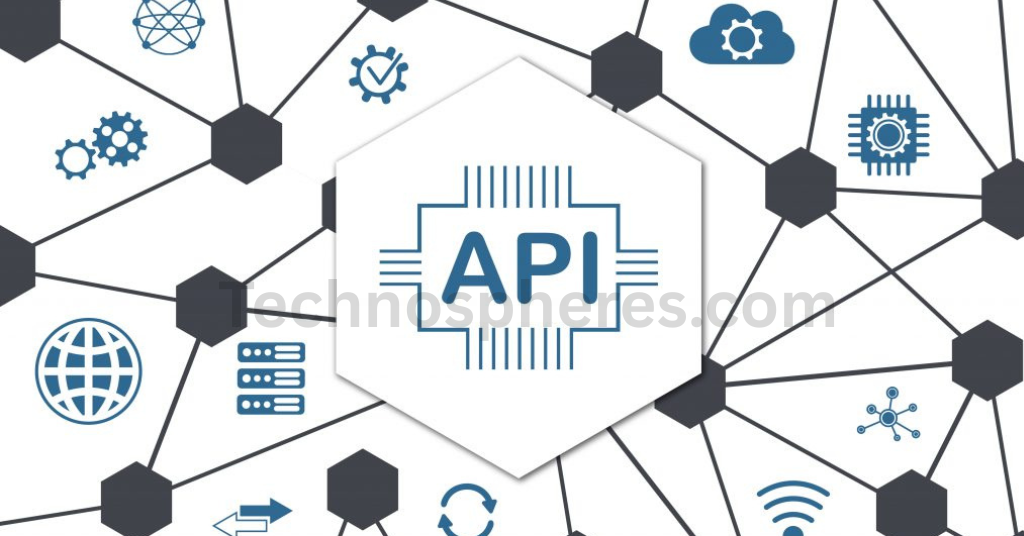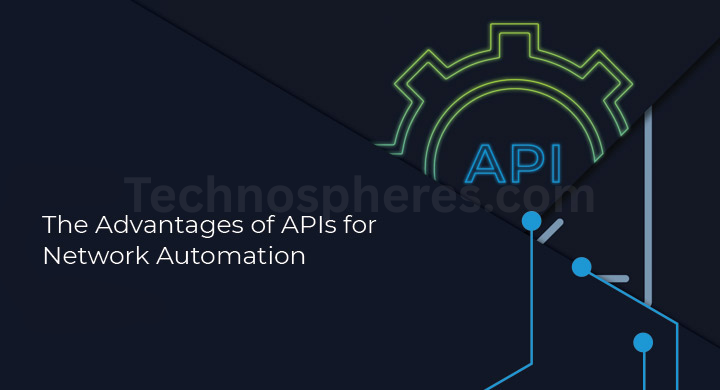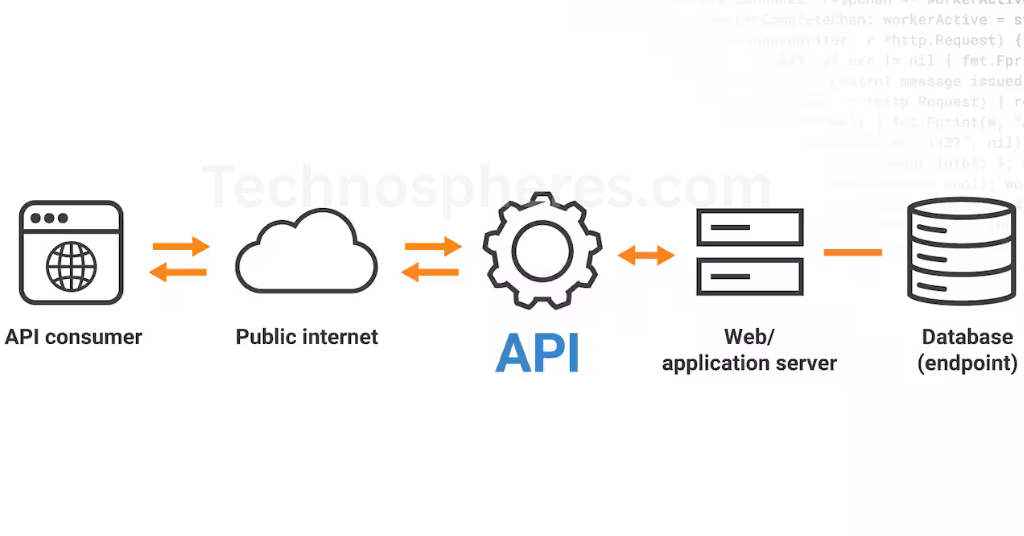
Role of APIs in Network Automation
In the fastmoving digital age of today, the Role of APIs in Network Automation is essential in handling complicated information technology setups. Manually managing networks is no longer practical given the growing call for fast, dependable, and safe connections. Reducing human interference, minimizing mistakes, and raising productivity all depend crucially on automation. Application Programming Interfaces (APIs) are one of the primary enablers of network automation.
The Role of APIs in Network Automation between several networking parts, APIs enable smooth communication, integration, and automatic network operation. The basics of network automation, its relevance in contemporary IT environments, and how APIs help networks become more mobile, expandable, and manageable are covered in this piece.
Network Automation in General Viewpoints
The use of software and programable tools to configure, control, and run network devices without direct human interference is called network automation. Relying much on people configuring routers, switches, firewall systems, and other network components, traditional network management typically led to errors, inefficiency, and inconsistency. These tasks are dynamically done with scripts, software tools, and APIs thanks to automation.
Many components of Role of APIs in Network Automation
Configuration management
- Automating configuration updates along with device provisioning.
- Making sure network equipment is uniform.
Network monitoring and diagnostics:
- Regularly checking network performance
- Automatic discovery and correction of network problems.
Monitoring for Compliance and Security
- Making sure that security measures are uniformly enforced bells the whole network.
- Automating remediation and compliance assessments.
Intent Based Networking (IBN) and Software Defined Networking (SDN)
- Centralized network resource management.
- Dynamic, policy based network management
Integration with Cloud and Virtual Infrastructure Technologies:
- Handling multi cloud and hybrid network infrastructure.
- Provisioning of virtual network functions (VNFs) automated.
Advantages of network automation:
- Reduced operating expenses: lessening hand labor and operational overhead.
- Faster response times and optimized network efficiency; better network efficiency.
- Supporting large, complex network settings with increased scalability.
- Increasing reliability: lower human mistakes and constant network.
Importance of Role of APIs in Network Automation
Modern network automation relies on APIs. They help management tools, network equipment, and software programs to effectively communicate with one another. APIs enable network engineers to automate chores through scripts and programs rather than depending on manual setups or conventional command line interfaces (CLI).
How network automation is made possible by APIs?
Programmatic management of network devices:
- APIs enable one to interact straight with firewalls, routers, switches, or other network equipment.
- With their capability to dynamically execute instructions, get data, and change configurations, they permit engineers.

Continuous Integration with Automation Technologies:
For automated network provisioning and management, APIs let integration with DevOps tools including Ansible, Terraform, and Puppet happen.
They let to efficiently handle hybrid networks by providing access to cloud services like Google Cloud, Azure, AWS.
Analytics and real time monitoring:
- Better understanding of performance, security, and traffic patterns comes from APIs simplifying the gathering of real time network information.
- By inputting information into machine learning models for predictive analysis, they enable AI driven automation.
Improved security and policy enforcement:
- APIs assist in the dynamic implementation of networkwide security rules.
- By automating access policies and identity verification, they make Zero Trust security models possible.
- In SDN settings, APIs manage and dynamically program network behavior.
- With intent based networking, network administrators set rules and the network itself adjusts to satisfy them.
Networking APIs examples
- RESTful APIs: Since they are simple and work well with web based apps, they are often seen in network automation.
- NETCONF&S YANG: Utilized for network device configuration and state management.
- gRPC APIs: Fast APIs for live communication between network parts.
- Vendor specific network automation and management application programming interfaces: Cisco DNA Center API, Juniper Junos API, Arista Cloud Vision API.
Knowledge of Interface in Network Automation
Network automation depends on APIs (Application Programming Interfaces) offering frictionless interaction among various network devices, management systems, and automation programs. Network management historically depended on manual setups through command line interfaces (CLI), which were slow and error prone. Programmatic interaction with network infrastructure via APIs enables third party system integration, remote management, and automation.
- In network automation, APIs enable engineers as well as executives to:
- Automate network resource provisioning and configuration.
- Get actual live network performance measurements.
- Apply dynamically changing security policies.
- Integrate with cloud surrounds for hybrid and multi cloud networking.
- APIs help networks operate more dynamically, spuriously, and effectively, therefore lowering operational costs but boosting dependability and security.
What are APIs?
An API (Application Programming Interface) is a set of rules and protocols that allow software applications, systems, or network devices to communicate with each other. Defining the format of requests and responses help APIs allows for smooth communication across several systems.
Most Important Features of Role of APIs in Network Automation:
- Abstraction: APIs hide complex network configurations and offer streamlined automation instructions.
- Interoperability: APIs let network hardware and software tools from several suppliers be combined.
- Automation & Efficiency: APIs cut down on the requirement for manual work, therefore increasing operational efficiency.
- Scalability: Dynamically run API driven network automation helps handle big networks.
- APIs enable network automation by allowing commands to be sent, data to be retrieved, and repetitive tasks to be automated throughout many network devices and services.
API kinds
Network automation employs several sorts of APIs, each having unique benefits and applications. The Role of APIs in Network Automation is categories most usually seen in networking are:
REST (Representational State Transfer) API
- Most frequently employed API kind in network automation.
- Interacts with network equipment using HTTP methods (GET, POST, PUT, DELETE).
- Data normally circulates in XML or JSON forms.
- Stateless design implies that every query carries all required information without relying on prior ones.
- For network automation, Cisco DNA Center API and Juniper Junos API use RESTful APIs.
Strengths:
- Just simple and straightforward to employ.
- Lightweight; thus suitable for automation over the Internet and in the cloud.
- Well backed up by current coding languages. •
SOAP APIs (Simple Object Access Protocol)
- API protocol from earlier used XML messaging.
- More overhead needed than REST.
- Commonly found in business settings demanding stringent protection levels.
- Includes WS Security among its built in security functions.
Pros:
- Stronger than REST thanks to built in authentication and encryption properties.
- Enables complex operations and transactions.
Drawbacks:
- More difficult to maintain and execute
- Slower than REST thanks to XML overhead.
gRPC (gRPC Remote Procedure Call)
- One high performance API framework by Google.
- Uses Protocol Buffers (Proto buf) instead of JSON or XML for quick information transfer.
- Realtime, two way communication is facilitated.
- Commonly seen in current network automation systems for fast data streaming.
Benefits:
- Efficient binary serialization makes this much quicker than REST and SOAP.
- Perfect for live applications that need uninterrupted data transfer.
Drawbacks:
- More difficult to carry into effect than REST.
- Not quite as popular in older systems.
RESTCONF and NETCONF (Network Configuration Protocol)
- Made especially for network device setting.
- NETCONF uses SSH based messaging in XML, whereas RESTCONF is a RESTful version of NETCONF.
- Dynamic network configuration control tool.
Benefits:
- Made specifically for projects using network automation.
- Gives complete control of device settings.
Drawbacks:
- Every kind of API has distinct uses, and network engineers select the correct API type depending on performance, security, and ease of integration.
API Protocols and Standards deployed in networking
Networking APIs adhere to particular standards and protocols to guarantee smooth communication among software, platforms, and devices. Requests are sent, answers are organized, and data is exchanged according to these protocols.
Hypertext transfer protocol / secure http (HTTPs / HTTP)
- This is the most frequently applied protocol for RESTful APIs.
- Using SSL/TLS encryption in HTTPS guarantees secure communication.
- Arista Cloud Vision API is used with Cisco DNA Center API and cloud networking solutions.
Network Configuration Protocol (NETCONF)
- Protocol based on XML built for network equipment configuration.
- Communicates with SSH (Secure Shell).
- Enables programmatic access to device configurations and their alteration.
- Juniper Junos API, Cisco IOSXR API employed.
RESTCONF, RESTful Configuration Protocol.
- Manages network settings using HTTP methods (GET, POST, PUT, DELETE).
- Data is presented in XML or JSON.
- Cisco, Juniper, and other networking suppliers sponsor it.
gRPC Network Management Interface (gNMI)
- Employs gRPC for fast, real time data exchange.
- Meant for configuration management and streaming network telemetry.
- Backed by Google and major network equipment makers, Open Config created.
Simple Network Management Protocol (SNMP)
- One of the oldest network monitoring rules.
- Used to get network device performance numbers.
- Not as effective as current API based methods but yet quite popular.
Open Config.
- Opensource standard data model for network automation.
- Defines device settings and telemetry data with YANG models.
- Depend on top networking equipment makers including Juniper, Arista, and Cisco.
Main Advantages of Network Automation APIs
Organizations that use APIs can automatically carry out routine tasks, enhance accuracy, and speed up network operations, therefore raising effectiveness and dependability. The major advantages of network automation via APIs are listed below:

Improved effectiveness and less repetitive labor.
In the past, network management called manual device configuration via Command Line Interfaces (CLI) that was time consuming and prone to human errors. By enabling programs to interact programmatically with network devices, APIs remove the requirement for manual input.
- Automates monitoring as well as device provisioning and configuration updates.
- Limits human errors owing to hands on work.
- Allows network engineers more time for planning projects instead of daily upkeep.
- By letting real time data collection via APIs, speeds up problem solving and issue solving.
Comparison: Manual vs. API-Based Network Management
| Aspect | Manual Management | API-Based Automation |
| Configuration Time | Slow, time-consuming | Fast, automated |
| Error Rate | High (due to human mistakes) | Low (standardized processes) |
| Scalability | Difficult for large networks | Easily scalable |
| Troubleshooting | Requires manual intervention | Automated alerts & diagnostics |
By reducing manual work, APIs increase operational efficiency and minimize downtime, leading to a more reliable and responsive network.
Enhanced Scalability and Flexibility
Growing companies’ network infrastructure spans several sites, data centers, and cloud surroundings. Manual setups get impossible, hence automation becomes necessary for scale. Using APIs, networks can automatically adjust to evolving needs without need of human interference.
- By automatically changing setup throughout thousands of devices, you can simply maintain largescale networks.
- Dynamic resource distribution guarantees that networks adjust to changes in traffic patterns on their own.
- Vendor agnostic features empower the compatibility of various software solutions and network hardware.
- By guaranteeing uniform and automated control throughout all environments, APIs give the versatility necessary to support sophisticated, dispersed network infrastructures.
Better Consistency and Accuracy
Among the most difficult aspects of manual network management is the incoherent device arrangements; these can result in security risks and network crashes. APIs guarantee accuracy and regulatory conformance by enforcing uniform network settings.
- By using the same settings on all points, it eradicates configuration drift.
- Minimizes misconfigurations causing performance problems and hence security violations.
- By automatic enforcement of policies, guarantees industry standards conformity.
- Realtime validation and error scanning help to cut discovery time.
- Using APIs, companies increase network reliability and lower the chance of human caused mistakes, therefore creating more stable and safe networks.
Quicker deployment and setup
Reducing the time needed to get internet devices and services online, APIs let quick network resource provisioning and deployment. Engineers can use APIs to automatize deployment processes, hence freeing networks for agility and responsiveness and therefore free of manual device configuration.
- Zero touch provisioning (ZTP) automates device setup, reducing deployment time.
- With one API call, instant configuration updates are possible on several gadgets.
- Faster introduction of new services and applications thanks to accelerated service deployments.
- Using APIs to automate backup and recovery processes helps to fast disaster recovery.
- Faster deployment guarantees that companies can rapidly react to market demands, introduce new products, and keep their network up.
APIs for network configuration and management
By allowing systematic access to network controllers and devices, APIs make network setup much less laborious. Reducing manual effort and mistakes, they enable task automation including device configuration, policy enforcement, and firmware updates.
Automatic distribution of devices
Through APIs, zero touch provisioning (ZTP) allows networked equipment to be automatically deployed devoid of human involvement. Particularly beneficial in extensive networks where devices demand constant configuration is it.
Managing Access Control and Network Policies
Integrating with policy management systems enables APIs to enforce network policies. According security requirements, they enable dynamic access list (ACLs) management, role based access, and firewall rules.
Popular Networking APIs and Their Use Cases
| API | Vendor | Use Case |
| Cisco DNA Center API | Cisco | Network automation and policy management |
| Juniper Junos API | Juniper | Device configuration and telemetry |
| Arista Cloud Vision API | Arista | Cloud-based network management |
| Open Config API | Open standard | Standardized network device configuration |
| NETCONF API | Various vendors | Network configuration and state management |
APIs for Integration and Network Orchestration
- By integrating several platforms and technologies, APIs allow for smooth management of network resources. Efficiently managing multivendor environments, help automate workflows, coordinate configurations, and synchronize every field.
- integration of API with DevOps Tools—Ansible, Terra former, etc.
- DevOps tools such Ansible, Terraform, and Puppet interact with network infrastructure via APIs for automated provisioning, configuration, and monitoring. This combine improves efficiency, consistency, and speed in network operations.
Network automation using CI/CD Pipelines.
By providing automatic testing, validation, and deployment of network setups, APIs support Continuous Integration/Continuous Deployment (CI/CD) in networking. This guarantees quick and accurate network configurations changes across all of the corporate policies.

Network analysis and artificial intelligence integration powered by API driven
With APIs, network analytics and artificial intelligence powered insights can be based on live data. Integration with AI/ML systems enables networks to automate decisions, forecast failures, manage traffic, and improve security by means of programmed decisions.
Obstacles and Forward Trends in API Based Network Automation
- Integration complexity comes from different vendors giving various API implementations.
- APIs that are not correctly secured can reveal network infrastructure to cyber threats.
- Small Scale Issue Effective resource allocation and monitoring would be required by running a big API powered network.
- Skill Gaps – IT teams call for knowledge about security, API development, and automation frameworks.
Future trends
- Artificial intelligence driven API, autonomous networks, and edge computing.
- AI Powered APIs will let self learning networks adapt freely to vary circumstances by means of AI integration.
- Autonomous Networks—Networks will become self healing, self optimizing, and self configuring with minimal human intervention.
- Integration of Edge Computing through APIs will enable real time data processing at the network edge, therefore boosting performance for latency sensitive and IoT applications.
Conclusion:
Automating, organizing, and safeguarding current networks depend critically on APIs. Role of APIs in Network Automation with CI/CD pipelines and DevOps tools improves efficiency and dependability. Future of network automation depends on artificial intelligence and analytics based APIs.
Role of APIs in Network Automation in the future will be thoroughly independent, AI driven, and powered by APIs. In a rising sophisticated network environment, companies using API first approaches will achieve flexibility, scalability, and privacy benefits.
Read more about Gaming from Technospheres.


